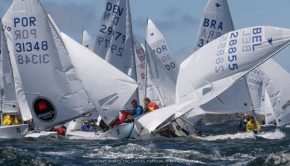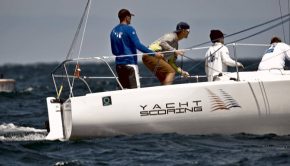Event communication: Making a plan
Published on April 10th, 2014
The internet has dramatically increased the opportunities for sailing events to reach sporting enthusiasts. But in addition to supplying the sailing fan with news information, leveraging the media helps to market the event to participants, promote the type of boat(s) participating, and offer sponsor fulfillment.
In the pecking order of event communication, words remain the foundation. Written reports provide an easy opportunity to both tell the story, and save the story for future reference. When it comes to providing prompt, comprehensive, and affordable news, words still win.
When an event is forming a communication plan, it is best to make a schedule on how often written reports would be provided, and what the goal of each report would be. The frequency of report distribution is related to the importance of the event, and the ability to create the reports. Be realistic on both counts.
There are two general approaches to tackling the schedule:
Plan A: Two Reports
• Before: Distribute the first report beforehand to announce the event, providing relevant details to incite interest. Entry information, venue description, race schedule, and contact information should be included.
• After: Distribute the final report after the final race, as soon as possible. This report should provide a sufficient summary of the event, and include final results.
Plan B: More Reports
• Before: Advance reports help activate registration, and build interest in the event and the participants. Seek out history and human interest stories that have broad appeal. The distribution schedule can begin as soon as the Notice of Race is available.
• During: A report to summarize each day and provide relevant details for following day(s). Include results.
• After: Distribute the final report after the final race, as soon as possible. This report should provide a sufficient summary of the event, and include final results.
To provide an example of a prominent event, the Sydney Hobart Race may be the gold standard in providing “more reports.” The 2013 edition, which included 94 boats, had 34 written reports before the start, there were an average of 5.5 reports a day during the 6-day event, plus one final 1700 word comprehensive report as a wrap. Click here for reports from the 2013 edition.
Additional tips to follow
Timeliness: Once an event begins, distribute daily report as quickly as possible. Do not wait for the results from each day to be finalized. Preliminary results are sufficient.
Quotes: Including quotes within a report humanizes the story, but also increases the workload and time needed. The report is better with quotes, but only if you do not overly sacrifice timeliness.
Consistency: Daily reports are daily. If you begin reporting on day one, you need to continue reporting on each day.
Archive: Event reports provide historical reference, which is of general interest to participants and important guidance for administrators. The reports should be archived on the event and/or boat class website.
Media: The report should include at least one photo, but more is better. The inclusion of photos should not impact the timeliness of the report. However, if a daily highlight video is being produced, that would likely delay the report distribution. Have information in the report where video (and photos) will be posted online.
Scuttlebutt hosts an index of Event Communication tips. Click here to view the list.









 We’ll keep your information safe.
We’ll keep your information safe.